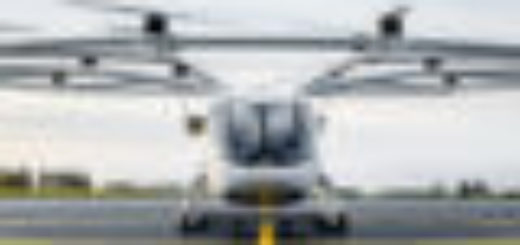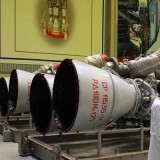German Navy Enhances Its Maritime Patrol Capabilities with Reception of Its First P-8A Poseidon

{loadposition bannertop}
{loadposition sidebarpub}
The first Boeing P-8A Poseidon intended for the German Navy has been painted in German colors at Boeing’s facility in Seattle, marking a key step in modernizing Germany’s maritime surveillance capabilities. This aircraft, registered as 63+01 and bearing serial number 170528, is the first of eight units to be ordered. They will gradually replace the aging P-3C Orion fleet. Delivery is scheduled for August 2025, initiating the transition to a more advanced and technologically integrated platform.
Follow Army Recognition on Google News at this link
The P-8A Poseidon is a multi-role maritime patrol aircraft derived from the Boeing 737NG, designed for anti-submarine warfare, anti-surface warfare, and intelligence, surveillance, and reconnaissance missions (Picture source: Boeing)
Germany began acquiring the P-8A Poseidon in June 2021 with an initial order of five aircraft under the U.S. Foreign Military Sales program, later adding three more units in November 2023. This program, allowing Germany to procure U.S. military equipment through an intergovernmental agreement, has progressed at an unusually fast pace, with only four years between the contract signing and the completion of the first unit. Following the application of its livery, the aircraft was transferred to Boeing Defense, where it will be equipped with its mission systems and undergo a series of tests before being handed over to the German Navy’s air squadron based in Nordholz, Lower Saxony.The P-8A Poseidon is a multi-role maritime patrol aircraft derived from the Boeing 737NG, designed for anti-submarine warfare, anti-surface warfare, and intelligence, surveillance, and reconnaissance missions. Powered by two CFM-56-7BE turbofan engines, it reaches a maximum speed of 490 knots, an operational ceiling of 41,000 feet, and extended endurance due to its in-flight refueling capability. Its Link 11 and Link 16 data links, combined with advanced satellite connectivity, enable near real-time intelligence transmission to command centers, optimizing coordination in joint and multinational operations. Its adaptable architecture allows for long-duration missions both in deep-sea environments and near coastal areas, with enhanced command and control capabilities on the battlefield.The aircraft’s weaponry includes Mark 54 torpedoes, AGM-84 Harpoon anti-ship missiles, and depth charges, distributed between an internal weapons bay and external hardpoints under the wings. It is also equipped with 129 sonobuoys for detecting, localizing, and tracking submarines. For surveillance and targeting, it features an inverse synthetic aperture radar and a synthetic aperture radar, enabling precise identification of surface and underwater threats. In terms of self-protection, the Poseidon is fitted with the AN/AAQ-24(V) DIRCM system, designed to detect and neutralize infrared-guided missiles, enhancing its survivability against aerial and naval threats.The acquisition of the P-8A Poseidon by the German Navy comes at a time when the renewal of maritime patrol capabilities is becoming increasingly urgent. Initially, Germany considered this procurement as an interim solution while awaiting the development of the Franco-German Maritime Airborne Warfare System, scheduled for 2035. However, with the shifting industrial priorities in France and Berlin’s decision to expand its P-8A fleet, the long-term integration of the aircraft into German forces appears increasingly likely.By acquiring the P-8A Poseidon, Germany joins the ranks of operators that include the United States, the United Kingdom, Australia, Norway, New Zealand, South Korea, and India, while Canada is also preparing to introduce the platform. Currently, over 130 P-8A aircraft are in service worldwide, accumulating more than 600,000 flight hours. Production begins at Boeing’s commercial aircraft facility in Renton, where the fuselage is manufactured according to 737 specifications before being transferred to Boeing’s defense facilities for military equipment and mission system integration.The German P-8A fleet will incorporate the latest configurations, including an advanced self-protection system capable of countering infrared-guided missiles, similar to those used on German government aircraft. For anti-submarine warfare, the aircraft will be equipped with acoustic buoy launchers, Mark 54 torpedoes, and Mark 84 depth charges. However, unlike the P-3C Orion, it will not feature a magnetic anomaly detector, reducing its ability to directly detect submarines based on their magnetic signature. For reconnaissance and counter-surface warfare missions, the Poseidon will be armed with Harpoon missiles and will feature a retractable electro-optical turret, as well as the AN/ALQ-240(V)1 electronic support measures system, providing electronic warfare and signal intelligence capabilities.One of the P-8A’s key advantages is its ability to transmit real-time intelligence to German command centers, strengthening Germany’s maritime surveillance in an evolving strategic environment. With its next-generation communication systems, it will play a central role in networked warfare operations, improving interoperability with NATO allies. Frigate Captain Björn M., project lead for the P-8A program within the BAAINBw, emphasized that this aircraft represents a significant enhancement in joint-force coordination and marks a new era for maritime surveillance and anti-submarine warfare.The entry of the P-8A Poseidon into the German Navy marks a critical step for the Bundeswehr in accelerating the modernization of its maritime patrol capabilities. This program, executed at an accelerated pace for a project of this scale, reflects Germany’s intent to quickly address operational gaps left by the retirement of the Orion fleet. In a geopolitical context shaped by the war in Ukraine and the increasing need for enhanced maritime surveillance, these new aircraft will reinforce Germany’s strategic posture and its ability to conduct long-range reconnaissance and anti-submarine operations.

{loadposition bannertop}
{loadposition sidebarpub}
The first Boeing P-8A Poseidon intended for the German Navy has been painted in German colors at Boeing’s facility in Seattle, marking a key step in modernizing Germany’s maritime surveillance capabilities. This aircraft, registered as 63+01 and bearing serial number 170528, is the first of eight units to be ordered. They will gradually replace the aging P-3C Orion fleet. Delivery is scheduled for August 2025, initiating the transition to a more advanced and technologically integrated platform.
The P-8A Poseidon is a multi-role maritime patrol aircraft derived from the Boeing 737NG, designed for anti-submarine warfare, anti-surface warfare, and intelligence, surveillance, and reconnaissance missions (Picture source: Boeing)
Germany began acquiring the P-8A Poseidon in June 2021 with an initial order of five aircraft under the U.S. Foreign Military Sales program, later adding three more units in November 2023. This program, allowing Germany to procure U.S. military equipment through an intergovernmental agreement, has progressed at an unusually fast pace, with only four years between the contract signing and the completion of the first unit. Following the application of its livery, the aircraft was transferred to Boeing Defense, where it will be equipped with its mission systems and undergo a series of tests before being handed over to the German Navy’s air squadron based in Nordholz, Lower Saxony.
The P-8A Poseidon is a multi-role maritime patrol aircraft derived from the Boeing 737NG, designed for anti-submarine warfare, anti-surface warfare, and intelligence, surveillance, and reconnaissance missions. Powered by two CFM-56-7BE turbofan engines, it reaches a maximum speed of 490 knots, an operational ceiling of 41,000 feet, and extended endurance due to its in-flight refueling capability. Its Link 11 and Link 16 data links, combined with advanced satellite connectivity, enable near real-time intelligence transmission to command centers, optimizing coordination in joint and multinational operations. Its adaptable architecture allows for long-duration missions both in deep-sea environments and near coastal areas, with enhanced command and control capabilities on the battlefield.
The aircraft’s weaponry includes Mark 54 torpedoes, AGM-84 Harpoon anti-ship missiles, and depth charges, distributed between an internal weapons bay and external hardpoints under the wings. It is also equipped with 129 sonobuoys for detecting, localizing, and tracking submarines. For surveillance and targeting, it features an inverse synthetic aperture radar and a synthetic aperture radar, enabling precise identification of surface and underwater threats. In terms of self-protection, the Poseidon is fitted with the AN/AAQ-24(V) DIRCM system, designed to detect and neutralize infrared-guided missiles, enhancing its survivability against aerial and naval threats.
The acquisition of the P-8A Poseidon by the German Navy comes at a time when the renewal of maritime patrol capabilities is becoming increasingly urgent. Initially, Germany considered this procurement as an interim solution while awaiting the development of the Franco-German Maritime Airborne Warfare System, scheduled for 2035. However, with the shifting industrial priorities in France and Berlin’s decision to expand its P-8A fleet, the long-term integration of the aircraft into German forces appears increasingly likely.
By acquiring the P-8A Poseidon, Germany joins the ranks of operators that include the United States, the United Kingdom, Australia, Norway, New Zealand, South Korea, and India, while Canada is also preparing to introduce the platform. Currently, over 130 P-8A aircraft are in service worldwide, accumulating more than 600,000 flight hours. Production begins at Boeing’s commercial aircraft facility in Renton, where the fuselage is manufactured according to 737 specifications before being transferred to Boeing’s defense facilities for military equipment and mission system integration.
The German P-8A fleet will incorporate the latest configurations, including an advanced self-protection system capable of countering infrared-guided missiles, similar to those used on German government aircraft. For anti-submarine warfare, the aircraft will be equipped with acoustic buoy launchers, Mark 54 torpedoes, and Mark 84 depth charges. However, unlike the P-3C Orion, it will not feature a magnetic anomaly detector, reducing its ability to directly detect submarines based on their magnetic signature. For reconnaissance and counter-surface warfare missions, the Poseidon will be armed with Harpoon missiles and will feature a retractable electro-optical turret, as well as the AN/ALQ-240(V)1 electronic support measures system, providing electronic warfare and signal intelligence capabilities.
One of the P-8A’s key advantages is its ability to transmit real-time intelligence to German command centers, strengthening Germany’s maritime surveillance in an evolving strategic environment. With its next-generation communication systems, it will play a central role in networked warfare operations, improving interoperability with NATO allies. Frigate Captain Björn M., project lead for the P-8A program within the BAAINBw, emphasized that this aircraft represents a significant enhancement in joint-force coordination and marks a new era for maritime surveillance and anti-submarine warfare.
The entry of the P-8A Poseidon into the German Navy marks a critical step for the Bundeswehr in accelerating the modernization of its maritime patrol capabilities. This program, executed at an accelerated pace for a project of this scale, reflects Germany’s intent to quickly address operational gaps left by the retirement of the Orion fleet. In a geopolitical context shaped by the war in Ukraine and the increasing need for enhanced maritime surveillance, these new aircraft will reinforce Germany’s strategic posture and its ability to conduct long-range reconnaissance and anti-submarine operations.







